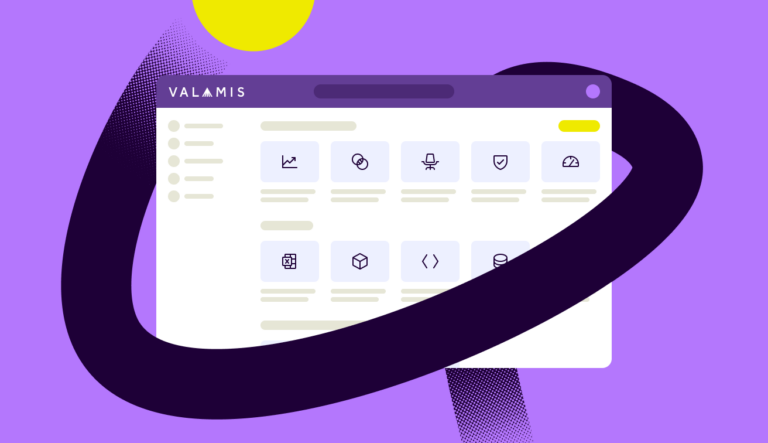Vicarious learning
How can vicarious learning help individuals expand their knowledge and skills? The article provides real life examples to help explain more.

After reading this article, you will grasp vicarious learning and how it helps individuals expand their knowledge and skills.
This guide will give you ideas on how this type of learning can help improve specific situations and manage tasks in the workplace.
Discover:
- What is vicarious learning?
- Vicarious learning vs. observational learning
- Benefits of vicarious learning
- Vicarious conditioning
- Vicarious learning examples
What is vicarious learning?
Vicarious learning is a way of learning that allows individuals to learn from the experience of others.
It is a conscious process that involves sensing, feeling, and empathizing with what people are doing and taking notes, and evaluating.
Rather than direct, hands-on instructions, vicarious learning is derived from indirect sources such as hearing and seeing.
Examples of indirect sources include: when an individual sees or hears a live situation, watches a video, listens to a story, reads a book, or imagines a situation.
Vicarious learning vs. observational learning
These two types of learning are similar in most ways, but they are not the same.
Both styles refer to a person having an experience that others can learn from. In vicarious learning, you can get the learning experience through other’s indirect experiences.
It can be through seeing or hearing them interacting and it can also be hearing the story of imagining the situation. An individual feels and thinks like the main character in that event.
However, observational learning is more clinical and objective. The learning experience is acquired by seeing a live situation or video recording. It also uses other visuals, such as images.

Build a learning culture: a practical workbook for your organization
Upgrade your organization’s learning culture with clear, actionable strategies to address the challenges.
Download workbookBenefits of vicarious learning
Implementing a vicarious learning approach in any learning environment is an effective strategy for expanding personal and professional knowledge.
This approach is based on the idea that individuals pick up new information and learn from seeing others’ experiences g. Learning from other individuals’ indirect experiences is memorable and fun and, therefore, useful.
The following are the benefits of vicarious learning:
1. Easy to obtain an experience
Seeing or listening to others’ experiences helps you to understand new experience patterns and behaviors.
It is also relatively fast and easy to obtain information on any new experiences. Vicarious learning equips you with unique experiences that have either positive or negative effects.
One example, when employees see how others performing something it’s easier to learn this rather than just doing it on your own.
You can watch first what to do, and then copy steps or movements to achieve the same result and learn through both experiences: vicarious (observational part) and real practical experience.
Another example, one person can explain and describe his experience to another person, so a person who is learning will get new knowledge and experience through visualization.
The real-world example most people face is an exam. Students often ask others how an exam was, what the teacher asked you, what was the subject/topic, and other questions related to the exam. And most often they get knowledge and experience that might help them to pass the exam successfully.
2. It takes risks out of the equation
Vicarious learning helps you gain experience without actual participation, e.g. you can watch a video of some dangerous situation and learn something from it, without the actual presence.
An opportunity like this allows you to get insights into certain situations without going through a costly trial and error process.
3. Improvement in imitation and knowledge retention
Vicarious learning offers the opportunity to watch and mimic a process and absorb the information at your own pace.
After understanding all the aspects of the task, it is committed to long-term memory and can be performed when the need arises.
4. You can learn from the stories
There are millions of books, stories, and bibliographies about people’s lives in the world.
These documents are used to present their past experiences, actions, and real-life situations.
Vicarious conditioning
Vicarious conditioning is the act of learning things through observing the reactions, attitudes, and emotions of others rather than direct exposure.
In psychology, it can be defined as learning through observing other people’s responses to an environmental stimulus that is most noticeable to the observer.
Vicarious classical conditioning occurs when a conditioned reflex is developed because there is an association between the conditioned stimulus and the unconditioned stimulus of reflexive response.
Vicarious learning examples
There are plenty of ways in which vicarious learning is applied in our everyday lives.
1. Viewing real-life situations
A salesperson who is relatively new to the job can learn how to offer better services and make more sales.
It can be done by listening to the sales experts make sales and observing how they behave when making sales.
It is also essential to pick the best traits to combine with their strengths to their business’s advantage.
Many employees often learn by behaving how they see their senior colleagues around them behave. They follow them around the workplace to get more experience and advice from them.
It only shows how much other people’s actions may just influence our daily lives.
2. Watching a video
With technological advancements, it has become quite easy for everyone to learn new skills just at the click of a button.
It has been very easy for business colleagues to catch up and keep the business going by interacting through various technological platforms such as Zoom and Slack.
These platforms also encourage colleagues to learn the skills through webinars, thus vicarious learning.
The same technological advancements also allow everyone to learn new skills they are interested in by watching videos.
Videos posted online often have “how-to” and tutorial videos. These videos elaborately show one how to perform such tasks, thus enhancing their skills. Apart from these “how-to” videos, there are also other videos that can be used for educational purposes on various topics.
All these are examples of vicarious conditioning since the observer learns from someone’s experience.
3. Reading a book and hearing a story
From the business-related books, we see the various business strategies that the author has applied and what worked in their business, and what failed.
It gives us a new perspective of the strategies to apply to make our businesses more successful and gives us an idea of the things not to do. It is all a part of vicarious learning.
When reading a book, we often get so engrossed in the story that we start picturing ourselves in the character’s shoes.
Depending on the character’s role, we get to learn the consequences of certain actions. In this regard, we get to learn through the character’s experience that all actions have consequences, and based on our actions, we expect a certain type of outcome.
Stories often have a way of capturing our attention and making us attentive.
Hearing a story from your colleague about someone who was recently fired because of specific misconduct will warn you to keep off the same activity.
It will also teach you to abide by company laws and regulations to avoid the same fate.
In the same way, hearing about someone who was recently promoted for being a high-performing employee will teach you that you should be more committed to your work to get better returns and therefore get considered for a promotion.

Build a learning culture: a practical workbook for your organization
Upgrade your organization’s learning culture with clear, actionable strategies to address the challenges.
Download workbook



